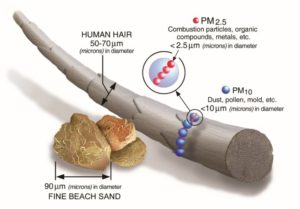Arctic Air Solutions Hepa filters
All Arctic Air Solutions High Efficiency Particulate Air filters are made to industry standard EN 1822 and ISO 29463 encased in very strong aluminium frames with high quality filter media sealed and individually pressure tested to ensure no leakage therefore enhancing the efficiency and producing filters that can withstand the harshest of fitment applications.
All Hepa filters are fully tested with the latest testing methods and are labeled with the filtration efficiency of 99.96% @ MPPS (most penetrating particle size).
Pleated filter media ensures you receive a filter with the highest filter surface area possible for maximum filter life and are manufactured without the use of harmful chemical components furthermore the filters are A plus eurovent performance energy rated independently certified to NOT provide nutrition to bacteria or mould.
Typically HEPA filters are used where machine operators are working in hazardous dusts such as Asbestos, cement, Bio Mass fuel, coal dust, woodworking industry dusts, agricultural dusts, mining and rail track ballast dusts such as deadly carcinogenic respirable crystalline silica.
Large surface area panel filters ensures a long filter life when installed as part of a correctly installed pressurised filtration system and so if you have requirements for operator protection against any hazardous dusts please contact us to discuss your needs.
PM 2.5
PM 2.5 is the buzz word with environmentalists, being reported on news programmes and within governments environmental lobbies currently as one of the decades most hazardous substance causing air quality to deteriorate to such a low level that human health can suffer as a consequence.
PM 2.5 refers to the size of the particulate matter which is emmited by motor vehicles and in particular diesel powered variants therefore fueling the push for more electric vehicles to be built and sold.
Other sources of PM 2.5 include but not limited to power plants, airplanes, residential wood burning, forest fires, agricultural burning, volcanic eruptions and dust storms.
It is true to say that PM 2.5 is so small it can travel deep into the human respiratory tract reaching the lungs. Exposure can cause eye,nose,throat and lung irritation,coughing sneezing, runny nose and a shortness of breath.
Long term exposure can effect lung function and worsen medical conditions such as asthma and heart disease.
PM 0.1
With environmentalists and the media highlighting the dangers of breathing in particulate matter of 2.5 microns in size, spare a thought for the operators of plant equipment working in hazardous dusts and gases where the particulate matter can be as small as 0.1 of a micron some twenty five times smaller than PM 2.5.
Arctic Air Solutions have been conscientiously installing hazardous air cab filtration overpressure systems to machinery filtering particulate matter down to 0.1 of a micron for many years.
Ensuring operator safety is paramount to our core values.
